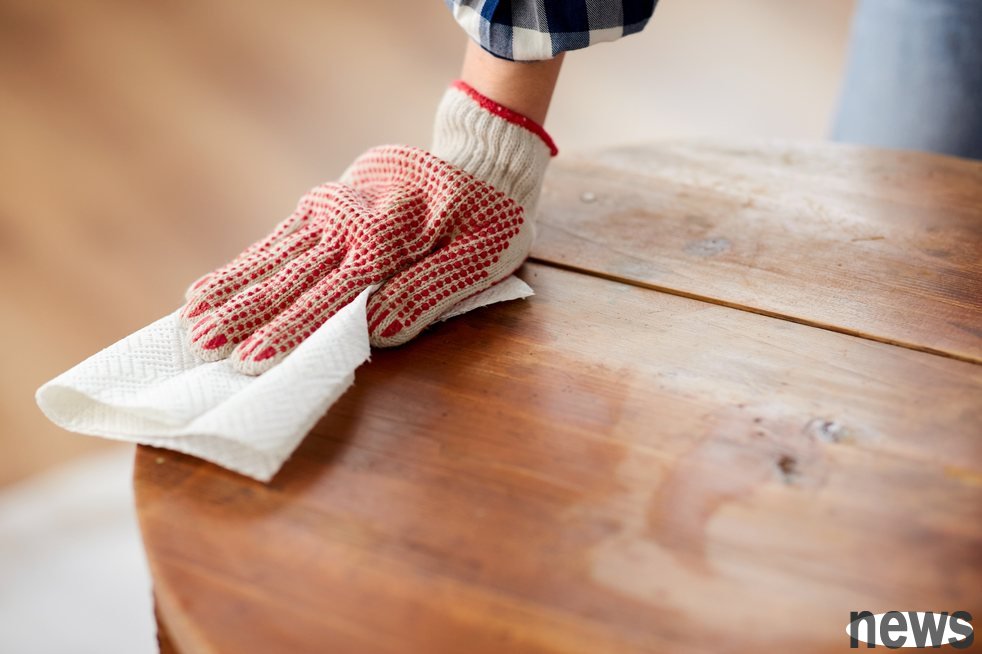It is common to find bacteria on outdoor book tables or old wood furniture. Fungi likes moisture and organic matter, so wooden furniture has become the first choice. The bacteria are both eye-abundant and form potential health threats, so they shoul...

It is common to find bacteria on outdoor book tables or old wood furniture. Fungi likes moisture and organic matter, so wooden furniture has become the first choice. The bacteria are both eye-abundant and form potential health threats, so they should be removed as quickly as possible. Martha stewart reports on visiting sterilization cleaning and repair expert Jason Bruning, and Dion Dunba, a experienced technician at Masters Remediation Services, share how to effectively remove bacteria and prevent wood-made furniture from getting moldy again.
Before starting cleaning, you need to know how to protect yourself. Dunba said that spores released by bacteria may cause respiratory tract conditions to be malignant. It is recommended to wear protective eye masks, N95 masks and gloves when cleaning, and open windows to ensure that they work in a good ventilation environment. If possible, use a high-efficiency filter air purifier.
{Bruning said that if the bacteria cannot be identified, or if the family members have a healthy attitude, it is the safest choice to seek expert assistance; if the bacteria cover more than 10 square feet of surface, repeatedly mold, or grow in difficult locations such as walls or near air conditioning systems, it is recommended to contact an expert to help.
Bruning said that experts usually use probes and moisture measurement to measure bacterial expansion, but ordinary people can use visual and visual observation. If the bacteria can be wiped off easily and the wood below feels hard and dry, it may be just moldy on the surface; but if the wood fades, feels soft or has an undesirable smell, the bacteria may have penetrated deeper.
Two experts said that to clean surface bacteria, high-efficiency filter network vacuum cleaners, white vinegar, spray bottles, water, soft brushes, and rags are needed. First, use a high-efficiency filter to remove spores in the moldy area, mix equal amounts of water and white vinegar and pour it into a spray bottle, spraying the moldy area, but not too moist, and let the mixture work for 10 to 15 minutes. After that, use a soft brush to clean the moldy area, and finally use a rag to clean the surface, and make the furniture completely dry in a well-ventilated position.
If the bacteria have been deeply rooted, a dehydrator, a sander, a rag, a salt boric acid wood treatment agent, and an antimicrobial sealer are required. Read the instructions on all cleaning agents first, and find a corner to test to make sure that the product can be safely covered on the wood. Then apply the appropriate amount of dehydrator on moldy dust to soak the dehydrator for the specified time on the packaging, wipe it with a rag, and let the furniture completely dry. Make sure to dry completely, then grind the area gently, and finally apply boric acid salt wood treatment agent and antimicrobial sealant to protect the wood head.
Two experts said that to prevent the wood from getting moldy again, it is necessary to control the atmosphere in the area, especially near walls, columns and wooden furniture. Bacteria reproduce rapidly in high humidity, air circulation, and other places close to water sources such as bathrooms and kitchens. Even water droplets condensed on surfaces with low temperatures can induce bacteria to grow. After deeply cleaning moldy wood, don't forget to cover the sealer to protect the surface and remove moisture.